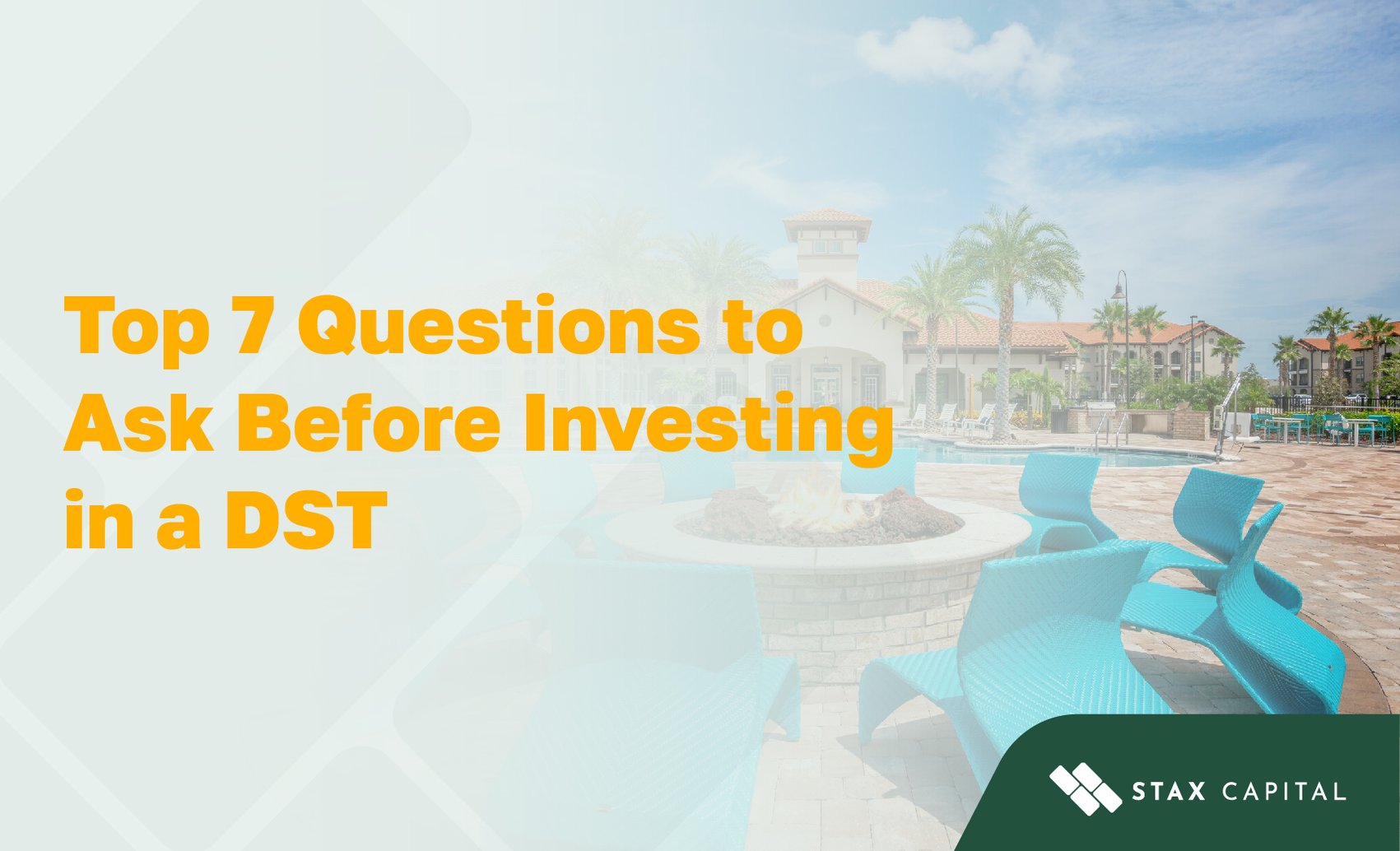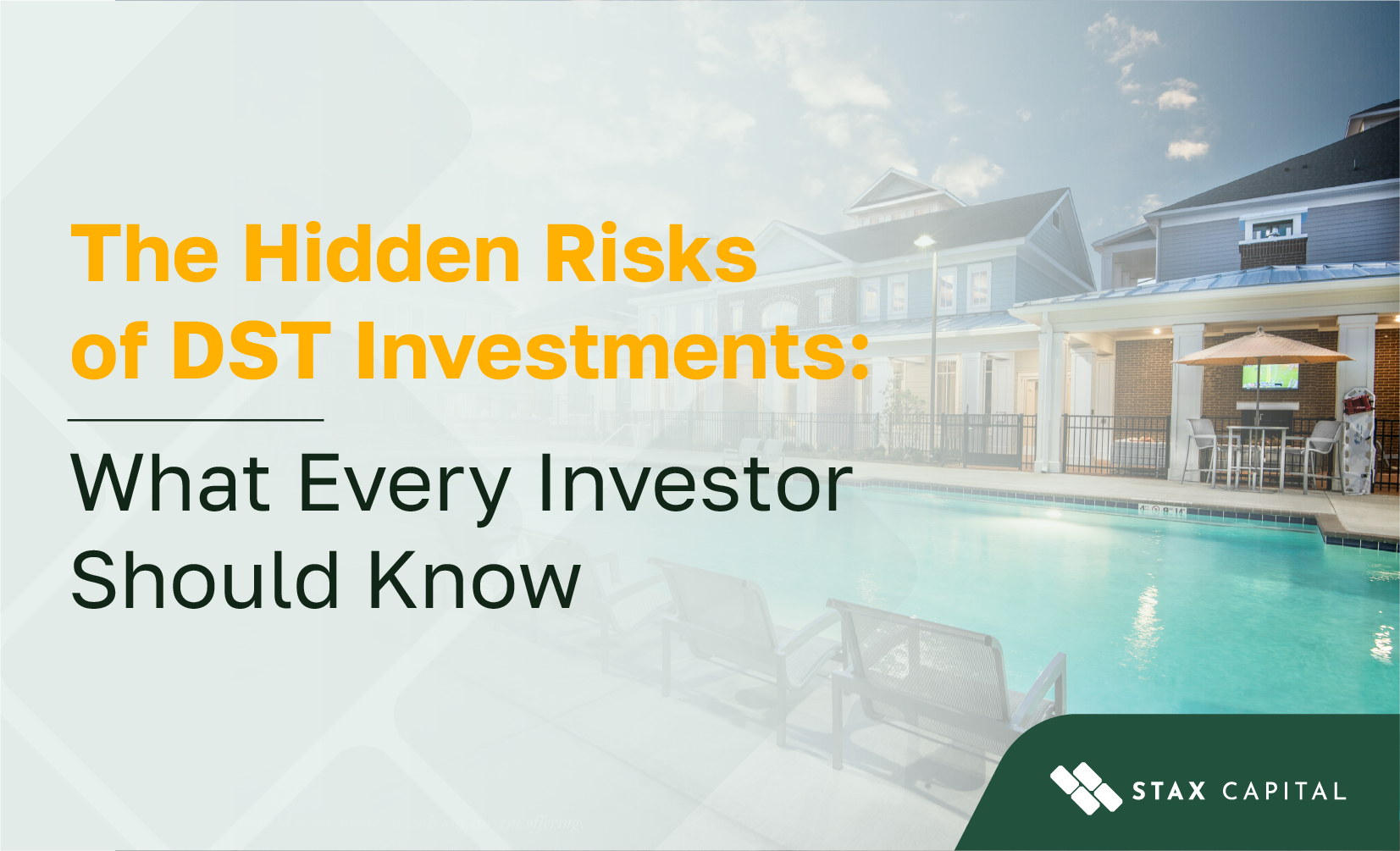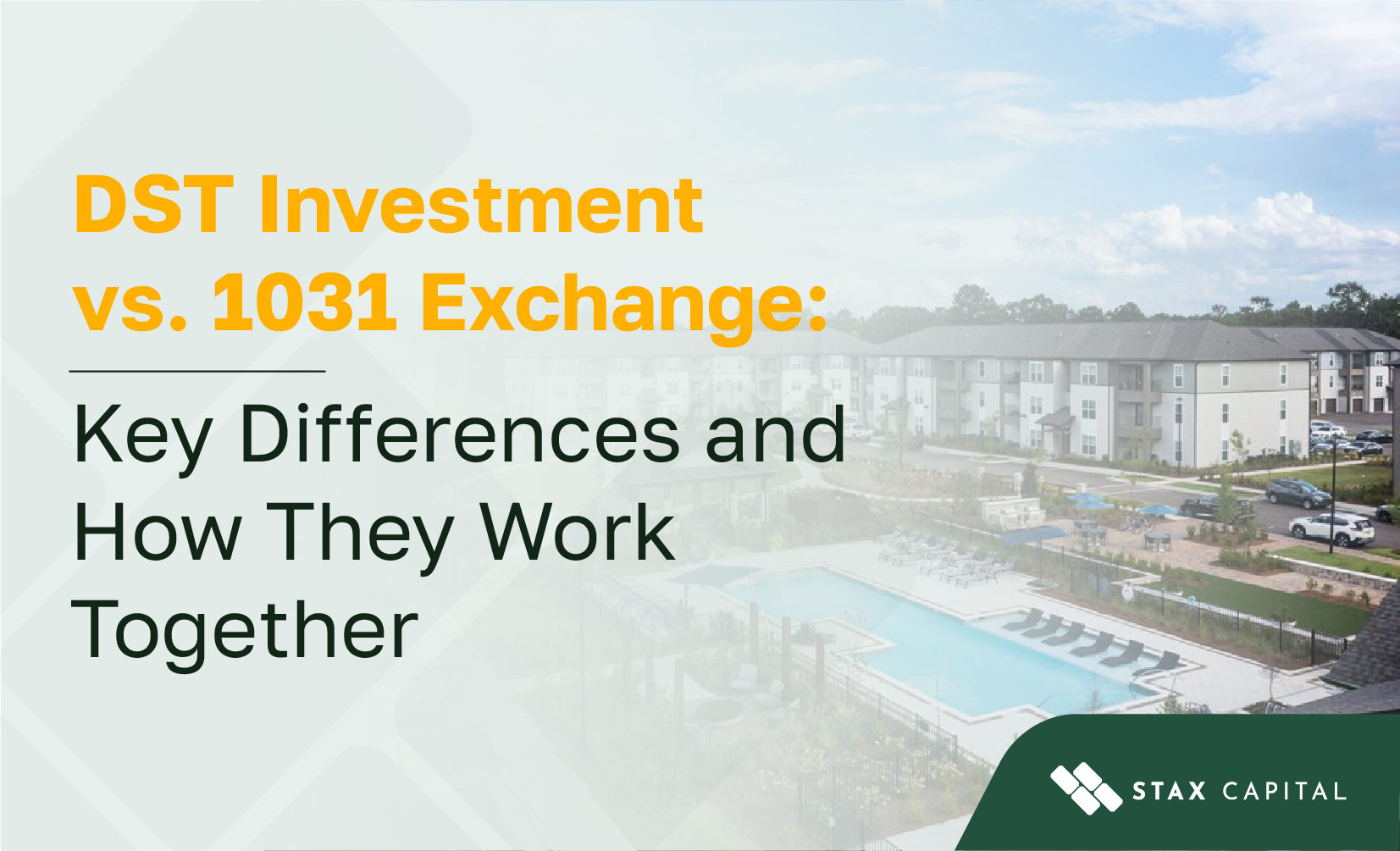Top 7 Questions to Ask Before Investing in a DST

Investing Through a DST? Ask These 7 Questions to Uncover Hidden Risks Before You Sign.
When evaluating a Delaware Statutory Trust (DST) as part of your 1031 exchange strategy, it's essential to ask informed questions to ensure the investment aligns with your goals, risk tolerance, and timeline.
Here are the Top 7 Questions to Ask Before Investing in a DST.
What is a DST?
Delaware Statutory Trusts (DSTs) offer investors the opportunity to hold fractional interests in professionally managed commercial properties. This structure facilitates passive real estate investment while potentially delivering tax advantages through a DST 1031 exchange. Additionally, DSTs provide investors with limited liability and exposure to a diverse range of commercial real estate assets.
1. What is the Sponsor’s Track Record and Due Diligence Process?
Real estate investing requires you to evaluate the sponsor’s experience and performance. Ask about their previous offerings and how those investments performed over time. Review their financial stability and operational track record to assess reliability. Understand the due diligence process they follow, including steps like site visits, stress testing, and background checks.
Also, consider the level of due diligence conducted by Stax to ensure added transparency and confidence in the offering.
2. What Are the Specific Risks Associated with the DST?
DSTs offer attractive benefits such as passive income and potential capital gains. But they come with inherent risks such as illiquidity. As we know that interests in DSTs cannot be easily sold or traded, they limit the ability to exit the investment before the end of the term. Real estate market fluctuations can also impact the performance of the asset, potentially affecting both returns and capital value. Tenant turnover and occupancy issues may result in inconsistent income.
Additionally, conflicts of interest could arise between the sponsor and the accredited investors if their objectives are not fully aligned. It is one of the important things to consider while investing in real estate.
3. What Is the Investment Objective and Exit Strategy?
It is important to have a clear understanding of the investment objective and exit strategy of the DST before making a commitment. Identify whether the primary goal is to generate consistent income, seek long-term appreciation, or a combination of both. Clarify the typical hold period, as this can impact your liquidity and overall planning.
Additionally, review the available exit options, which may include an asset sale, a 721 exchange into a REIT, or other structured outcomes. Knowing what happens at the end of the trust’s term is essential for setting expectations and preparing for next steps in your investment journey.
4. How Does This DST Fit Within My 1031 Exchange Timeline?
The 1031 exchange process comes with strict deadlines that must be adhered to for successful completion. Investors are given 45 days to identify a replacement property and must close within 180 days. It is crucial to confirm that the DST can be acquired within this timeframe to avoid missing key deadlines.
Stax is committed to helping investors meet these requirements, offering support for timely closings. When properly planned, Stax can assist in completing the 1031 exchange process within just 3–5 business days, and provides an attractive option for portfolio diversification.
5. What Are the Fees and How Will They Impact My Return?
DST investments may involve several types of fees, each of which can affect the overall performance of the investment. These fees typically include upfront costs, asset management fees, and disposition or backend fees, which are incurred when the asset is sold. It is crucial to fully understand both the disclosed fees and any embedded fees that may not be immediately apparent.
Carefully assess how these costs will impact the net cash flow and the long-term returns of the investment. By doing so, investors can make more informed decisions and better evaluate the true value of the DST.
6. What Kind of Real Estate Is Held in the DST and Where Is It Located?
Understanding the asset type is crucial when evaluating a DST investment. Whether the property is multifamily, industrial, retail, or another category, each type has its own set of characteristics and risks. It is important to request detailed information about the location, including demographics, employment trends, and the overall economic stability of the market.
These factors help assess the growth potential and risks associated with the investment. Additionally, evaluate the quality of the property, the tenant mix, and the lease structures in place. These elements are critical as they directly influence both the performance of the asset and the level of risk involved in the investment.
7. Am I Eligible, and Is This Investment Suitable for My Goals?
You may be eligible for a DST (Delaware Statutory Trust) investment if you're an accredited investor. Also, if you're completing a 1031 exchange to defer capital gains taxes. DSTs are commonly used in real estate 1031 exchanges as replacement property options.
This type of investment may be suitable if you're seeking passive real estate income without the responsibilities of being a landlord, want diversification across institutional-quality properties, are looking to defer taxes through a 1031 exchange, and have a desire for potential cash flow.
However, a DST may not be appropriate if you require liquidity, as these investments are generally illiquid for 5 to 10 years. Also, if you want control over property management, have a short-term investment horizon, or are uncomfortable with real estate market risks then DSTs might not be suitable for you.
Is DST Investing Right for You?
While DST investments provide an attractive option for diversifying your portfolio, they come with risks. It’s essential to weigh these risks against the potential rewards and ensure you’re prepared for the long-term commitment. By working with qualified professionals and thoroughly understanding the terms and implications, you can make informed decisions that align with your financial goals.
If you’re ready to take the next step or need guidance, we’re here to help. Get in touch with Stax today to learn more about how DST investments fit into your strategy!



Share: